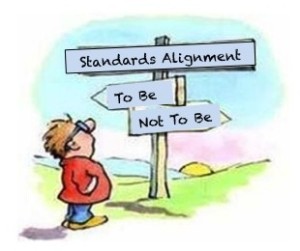Today, Learning List released market insights drawn from hundreds of alignment verifications we have completed. Although Learning List reviews both comprehensive and supplemental instructional materials, this analysis only included materials that publishers claimed to be aligned to 100% of the relevant standards. Learning List’s Subject Matter Experts (experienced educators) found that, on average, those materials were aligned to:

- 87% of Common Core State Standards; and
- 88% of the Texas Essential Knowledge and Skills (TEKS).
Thus, there was an average gap of 13 percentage points between publishers’ claimed alignment percentage and the alignment percentage determined by Learning List’s independent reviews. The largest gap was 50 percentage points for Common Core materials and 32 percentage points for TEKS materials.
Why the discrepancy? One reason is that publishers and educators may be using different definitions of “alignment”. The impetus for Learning List was the need to address a common frustration among school board members, superintendents, and curriculum directors. District and School executives asserted that publishers often say that their materials are aligned to 100% of the standards, but once districts purchase them and teachers start using the products, they find that the materials are only “superficially” aligned. One plain-spoken superintendent explained it this way, “Publishers align to the nouns of the standards, but our students are tested on the verbs.”
Learning List reviews instructional materials from the educators’ perspective, looking for alignment to the content, context and cognitive demand (or performance expectation) of each standard. Having already reviewed hundreds of instructional materials for alignment to both the Common Core and Texas Essential Knowledge and Skills, our experience corroborates that most publishers do a good job of aligning their materials to the content of the standards (what students are expected to know), but do not routinely ensure that the material also addresses the cognitive demand of each standard (how the students are expected to demonstrate their knowledge) at the requisite level of rigor for the grade level. Hence, that is the most significant reason for the discrepancy between the publisher’s claimed alignment percentage and the percentage determined by Learning List. So, prior to purchasing any instructional materials that span multiple grade levels, it would be wise for schools and districts to review the material’s alignment to each grade level’s standards.